Don't wanna be here? Send us removal request.
Text
What Is a Facebook Personal Ad Account? Benefits and Guide

When it comes to advertising on Facebook, understanding the tools available to you is essential. A Facebook personal ad account is one of the most commonly used accounts by individuals and small businesses to launch campaigns, track performance, and reach their audience.
But what exactly is a Facebook personal ad account, and how does it differ from other account types?
In this guide, we’ll explore the basics of a Facebook personal ad account, how to use it effectively, and common scenarios where it shines. Whether you’re new to Facebook Ads or looking to optimize your strategy, this article has you covered.
What Is a Facebook Personal Ad Account?
A Facebook personal ad account is an advertising account tied to an individual’s Facebook profile. Unlike Business Manager accounts, which are designed for companies managing multiple ad accounts and team members, a personal ad account is simpler and suited for individual use or small-scale campaigns.
If you’ve ever asked, “What is a personal ad account on Facebook?”, here’s the answer: it’s the default ad account created when you start running ads through your personal Facebook profile.
Benefits of Using a Personal Facebook Ad Account
1. Simplicity for Beginners
A personal ad account is straightforward to set up and use. It’s ideal for those new to advertising or running limited campaigns, such as promoting a side hustle, blog, or personal project.
2. Quick Access to Advertising Tools
Since it’s linked to your personal profile, there’s no need for extensive setup. You can start creating ads directly from your Facebook page, saving time.
3. Control and Customization
With a personal ad account, you have direct control over your ad spend and campaigns. It’s easy to adjust budgets, modify targeting, and test different ad creatives.
How to Set Up and Use a Facebook Personal Ad Account

Step 1: Access the Ads Manager
To start using your personal ad account Facebook, log in to your profile and navigate to the Facebook Ads Manager.
Step 2: Create a Campaign
Click the “Create” button to start a new campaign.
Choose an objective, such as Awareness, Traffic, or Conversions, based on your goals.
Step 3: Set Your Budget and Targeting
Define your daily or lifetime budget.
Use Facebook’s audience targeting features to select demographics, interests, and behaviors.
Step 4: Design Your Ad
Upload compelling visuals, write engaging copy, and include a clear call-to-action (CTA).
Step 5: Launch and Monitor
Once your ad is live, use Ads Manager to monitor performance metrics like Click-Through Rate (CTR), Cost Per Click (CPC), and Return on Ad Spend (ROAS).
Limitations of a Facebook Personal Ads Account
While a personal ad account is user-friendly, it may not be the best choice for everyone:
Limited Scalability If you’re managing multiple campaigns or clients, transitioning to a Business Manager account may be necessary for better organization.
Restricted Team Access Since personal accounts are tied to an individual profile, sharing access with collaborators can be cumbersome.
When Should You Use a Personal Ad Account?
A Facebook personal ad account is ideal for:
Small businesses testing the waters of Facebook advertising.
Freelancers or solopreneurs running single campaigns.
Individuals promoting personal projects or events.
For larger campaigns or team collaboration, consider upgrading to a Business Manager account.
Key Differences Between Personal and Business Ad Accounts

Conclusion: Is a Facebook Personal Ad Account Right for You?
A Facebook personal ad account is a fantastic starting point for individuals or small-scale advertisers. Its simplicity and accessibility make it an excellent tool for launching campaigns without unnecessary complexity.
However, as your advertising needs grow, transitioning to a Business Manager account may provide the additional features and scalability you require.
By understanding the strengths and limitations of a personal ad account, you can make informed decisions about how to use Facebook Ads effectively.
0 notes
Text
What is a Facebook Agency Ad Account? Why Do You Need One?

In the ever-evolving world of digital advertising, managing multiple clients and campaigns effectively is key to success for agencies. Enter the Facebook agency ad account - a game-changing tool that simplifies campaign management, enhances collaboration, and provides the scalability agencies need.
Whether you’re a small digital marketing firm or a large agency, understanding the ins and outs of a Facebook agency ad account can significantly boost your operational efficiency.
In this guide, we’ll delve into everything you need to know about agency ad accounts, how to set them up, and tips to maximize their potential.
What Is a Facebook Agency Ad Account?
A Facebook agency ad account is a specialized account designed for agencies managing multiple clients or campaigns on the Meta Ads platform. Unlike regular ad accounts, agency accounts offer enhanced features for collaboration, billing, and streamlined access to multiple accounts.
By using a Facebook agency ad account, agencies can seamlessly manage campaigns for multiple clients without the need to log in and out of different accounts.
Why Use a Facebook Agency Ad Account?
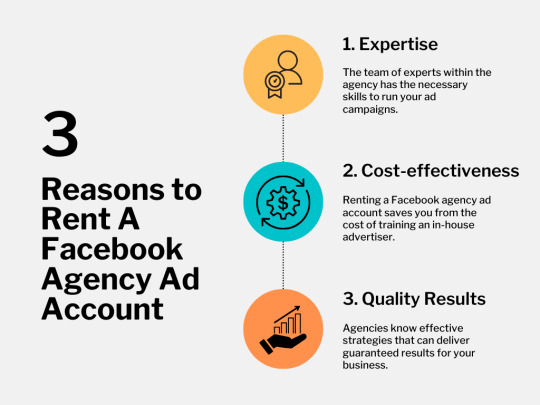
1. Simplified Campaign Management
With a single agency account, you can manage campaigns for numerous clients in one central hub. This eliminates the confusion of handling multiple individual accounts and helps you maintain better control over ad delivery and performance.
2. Enhanced Collaboration
A Facebook ad agency account allows teams to collaborate more effectively by assigning roles and permissions. For instance, you can grant clients limited access to view reports while keeping full administrative access for your team.
3. Consolidated Billing
The agency ad account Facebook setup streamlines billing by consolidating all ad spend into a single monthly invoice, making financial management more straightforward.
4. Advanced Insights and Reporting
Agency accounts provide access to advanced analytics and reporting tools, enabling you to measure performance across campaigns more effectively.
How to Set Up a Facebook Agency Ad Account?
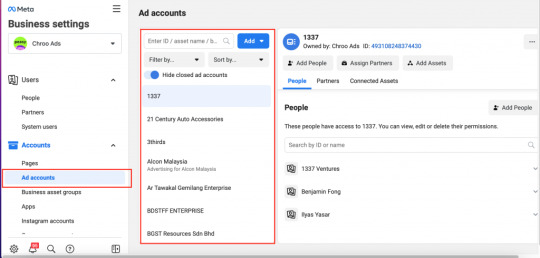
Step 1: Create a Business Manager Account
To use a Facebook ads agency account, you must first set up a Facebook Business Manager account. This is the central hub for managing all your client accounts and assets.
Step 2: Add Ad Accounts
Navigate to the "Accounts" section within Business Manager.
Select "Add" and choose "Ad Accounts."
You can either create new ad accounts or request access to existing client accounts.
Step 3: Assign Roles and Permissions
Grant your team members or clients appropriate roles, such as "Analyst" or "Advertiser," to streamline collaboration.
Step 4: Set Up Billing
Under the "Payments" section, configure billing settings to consolidate all client charges under one invoice.
Best Practices for Managing Facebook Agency Ad Accounts
1. Use Separate Campaigns for Each Client
Avoid overlapping audiences by keeping each client’s campaigns separate within your Facebook agency ads account. This ensures precise targeting and avoids ad fatigue.
2. Optimize for Scalability
Leverage automation tools within the agency account Facebook ads to manage large-scale campaigns effectively. For instance, use rules to automatically adjust bids or budgets based on performance metrics.
3. Monitor Performance Closely
Use advanced reporting features to track KPIs for each client. Metrics like CTR, CPC, and ROAS should guide your optimization efforts.
4. Stay Compliant with Policies
Ensure all ads comply with Facebook’s advertising policies to avoid disruptions in campaign delivery.
Conclusion: Why a Facebook Agency Ad Account Is a Must-Have for Agencies
For digital marketing agencies, a Facebook agency ad account is more than just a tool��it’s a necessity for efficient, scalable, and effective campaign management. By streamlining collaboration, simplifying billing, and providing advanced insights, agency accounts empower teams to deliver outstanding results for their clients.
Whether you’re setting up your first agency account Facebook ads or optimizing an existing one, following best practices will help you unlock the full potential of Meta’s powerful advertising ecosystem.
#digital marketing#facebook ads#facebook advertising#digital marketing agency#ads agency#ads account
0 notes
Text
Why Your Facebook Ads Stopped Spending: Causes and Solutions
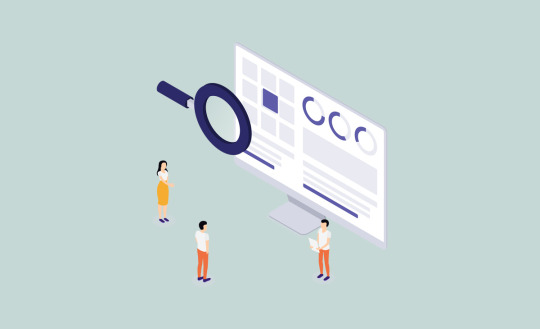
Facebook Ads have become an indispensable tool for businesses looking to expand their reach. But when your carefully crafted campaigns suddenly stop spending, frustration can set in. Understanding the root causes of why your Facebook ads stopped spending is essential to resolving the issue and ensuring your advertising dollars work for you.
In this blog, we’ll explore common reasons for this problem, how to identify them, and actionable solutions to get your ads back on track.
What Does It Mean When Your Facebook Ads Stop Spending?
When your ads stop spending, it typically means that Facebook is not showing your ads to your target audience. This is often due to issues like ad delivery problems, budget constraints, or compliance violations. Before diving into solutions, let’s unpack why this might happen.
1. Budget and Payment Issues
One of the most common reasons Facebook ads stopped spending is due to budget limitations or payment issues. If your account lacks sufficient funds or if your payment method fails, Facebook will pause your campaigns.
How to Fix It:
Double-check your ad account’s payment settings to ensure your method is up to date.
Review your campaign budget to confirm that it aligns with your audience size and goals.
If you’re asking, “Why did my Facebook ads fail to pay?”, check for any holds or restrictions on your payment account.
2. Ad Set or Campaign Settings Misalignment
Your ad’s delivery could stop if there’s a mismatch in your campaign’s configuration. For example, overly narrow targeting or conflicting settings can prevent ads from reaching their intended audience.
How to Fix It:
Broaden your audience by relaxing overly restrictive targeting criteria.
Review your campaign's optimization settings to ensure they align with your goals, such as conversions or reach.
Use Facebook's "Audience Size" indicator to gauge whether your settings are too restrictive.
3. Ad Review and Compliance Issues
Ads that don’t comply with Facebook’s advertising policies can be paused or disapproved altogether. Even if your facebook ad approved but not spending, it might still be under limited delivery due to flagged content.
How to Fix It:
Check the Ads Manager for any alerts or notifications about disapproved ads.
Ensure your ad copy, images, and landing pages meet Facebook’s guidelines.
If your ad was flagged incorrectly, submit an appeal for manual review.
4. Audience Saturation or Ad Fatigue
If your ad has been running for a long time, your audience may have seen it multiple times. This leads to lower engagement rates and stops your campaign from spending effectively.
How to Fix It:
Refresh your ad creative by updating visuals, copy, or offers.
Expand your target audience or create Lookalike Audiences to reach new prospects.
Monitor the Frequency metric in Ads Manager to avoid overexposure.
5. Technical Glitches or Platform Issues
Occasionally, your meta ads active but not spending could be due to bugs or temporary outages in the Ads Manager platform.
How to Fix It:
Check for platform-wide issues by visiting the Meta Status page.
Pause and restart your campaign to refresh the ad delivery system.
If the issue persists, contact Facebook Support for assistance.
6. Bid and Auction Problems
Facebook Ads operate on an auction system, and if your bid is too low, your ads may lose out to higher-bidding competitors.
How to Fix It:
Increase your bid or switch to "Automatic Bidding" for better results.
Ensure your daily budget is sufficient to compete in the auction process.
Conclusion: Get Your Ads Back on Track
When your Facebook ads stopped spending, it’s essential to troubleshoot systematically. From budget issues to audience saturation and compliance errors, identifying the root cause will help you take targeted action.
By staying proactive and monitoring your campaigns regularly, you can minimize disruptions and maximize your ad performance. Keep these tips in mind to ensure your campaigns are always working toward your business goals.
0 notes
Text
Facebook Ads not Delivering Problem: A Troubleshooting Guide

When you’ve spent hours crafting the perfect Facebook ad campaign only to find that your ads aren’t delivering, it’s more than frustrating - it’s a roadblock to achieving your business goals.
Facebook Ads not delivering is a common issue marketers face, but understanding the reasons behind it can help you quickly resolve the problem and get your campaigns back on track.
In this blog post, we’ll explore the top reasons why Facebook Ads might not be delivering and share actionable tips to fix them. Whether you're new to the platform or a seasoned marketer, these insights will ensure your ads reach your target audience effectively.
What Does "Facebook Ads Not Delivering" Mean?
When we talk about "ads not delivering," we mean that your ads are not being shown to your target audience at all. This isn’t about poor performance or low engagement; it’s about your ad not even entering the auction process Facebook uses to determine which ads get shown.
Common Reasons Why Your Facebook Ads Are Not Delivering

1. Ad Set in Review
Every ad on Facebook must go through a review process to ensure it complies with the platform's policies. If your ad is stuck in review for an extended period, it won’t deliver. This often happens when:
The ad includes sensitive or restricted content.
Facebook’s automated systems flag the ad for manual review.
How to Fix It:
Check your ad's status in the Ads Manager. If it's stuck in review for more than 24 hours, contact Facebook support.
Ensure your ad complies with Facebook’s advertising policies.
2. Low Budget or Bid Issues
If your ad’s daily budget or bid is too low, it might not compete effectively in the ad auction. Facebook’s algorithm prioritizes ads with competitive bids and budgets that can sustain audience reach.
How to Fix It:
Increase your daily budget or bid amount.
Use automatic bidding if you’re unsure about setting manual bids.
3. Audience Overlap
When multiple ad sets target similar audiences, your campaigns compete against each other, driving up costs and potentially leading to under-delivery.
How to Fix It:
Use Facebook’s Audience Overlap tool to identify and adjust overlapping ad sets.
Consolidate similar ad sets to maximize efficiency.
4. Restrictive Targeting
Overly narrow targeting can limit the size of your audience, making it difficult for Facebook to deliver your ad to enough people.
How to Fix It:
Broaden your targeting by expanding interests, demographics, or behaviors.
Use Lookalike Audiences to reach more users similar to your existing customers.
5. Ad Fatigue
If your ad has been running for too long, your target audience may have already seen it multiple times. This leads to lower engagement and reduced delivery.
How to Fix It:
Refresh your creative with new visuals or copy.
Adjust the targeting to reach a new segment of your audience.
6. Disapproved Ads
If Facebook disapproves your ad, it won’t deliver at all. This usually happens when your ad violates policies around content, landing pages, or ad formats.
How to Fix It:
Review the disapproval notice in Ads Manager.
Edit the ad to comply with the guidelines and resubmit for review.
Pro Tips to Avoid Facebook Ads Delivery Issues
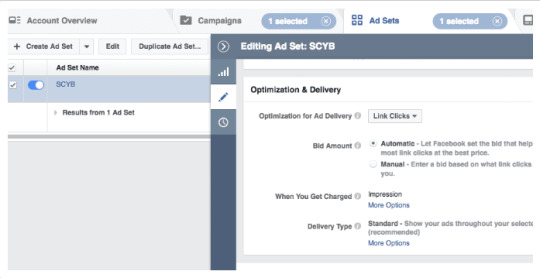
Monitor Your Campaign Daily: Regularly check the status of your ad sets in Ads Manager.
Test Different Strategies: Experiment with varied targeting, creatives, and placements to identify what works best.
Leverage Automated Rules: Set up automated rules to pause underperforming ads or notify you of delivery issues.
Conclusion
Experiencing Facebook Ads not delivering can be a significant hurdle, but it’s not an unsolvable one. By understanding the potential causes - whether it’s a budget issue, restrictive targeting, or ad disapproval - you can take proactive steps to resolve the problem.
Regular monitoring and a willingness to test and adapt your strategy will keep your campaigns running smoothly and ensure your ads reach the right audience.
0 notes
Text
Facebook Ad Account Restricted? What to Do? 2025 Best Guide

If you’ve been running Facebook ads for your business or personal projects, you know how powerful the platform can be for reaching your target audience. But what happens when you suddenly see the dreaded notification: “Your ad account has been restricted”?
This can feel like a major roadblock, but don’t panic! Here’s a step-by-step guide on understanding why Facebook ad account restricted issue happens and how you can resolve it.
Why Was My Ad Account Restricted?
Facebook has strict advertising policies to protect its users from spam, scams, and inappropriate content. While this is great for users, it can sometimes lead to legitimate advertisers getting flagged by mistake. Here are some common reasons for restrictions:
Policy Violations
Facebook’s ad policies cover everything from prohibited content (e.g., misleading claims, illegal products) to community standards (e.g., nudity or hate speech). Even unintentional violations can result in restrictions.
Suspicious Activity
If Facebook detects unusual spending patterns or multiple failed payment attempts, it may restrict your account to prevent fraud.
Low Feedback Score
Ads that receive too many negative interactions (e.g., people hiding them or reporting them as spam) can lead to restrictions over time.
Business Manager Issues
If your account is linked to a Business Manager that has violated Facebook’s policies, your account might get caught in the crossfire.

Steps to Resolve a Restricted Ad Account
Getting your account back up and running requires a mix of patience, compliance, and clear communication. Here’s how to tackle the problem:
Review the Notification
Start by carefully reading the message or email from Facebook. It will often specify the reason for the restriction and provide instructions on next steps.
Check Facebook’s Policies
Visit Facebook’s Advertising Policies to see if you’ve unintentionally violated any guidelines.
Request a Review
If you believe the restriction was a mistake, submit a review request. You can do this by going to Account Quality in your Facebook Business Manager and following the steps to appeal the decision.
Be clear, professional, and concise in your explanation. Avoid emotional or defensive language.
Verify Your Identity
Facebook may require you to upload government-issued ID or other documents to confirm your identity. This is a standard step and helps reassure Facebook that you’re a legitimate advertiser.
Check Payment Methods
Ensure your payment methods are valid and up to date. Suspended payments can trigger account restrictions.
Seek Expert Help
If you’re unable to resolve the issue on your own, consider reaching out to a Facebook Marketing Expert or seeking advice from experienced advertisers in forums and groups.
Preventing Future Restrictions
Once your account is reinstated, it’s important to take proactive steps to avoid running into the same issue again.
Follow Policies Closely: Regularly review Facebook’s advertising rules to ensure your campaigns comply.
Monitor Feedback: Keep an eye on the feedback your ads are receiving and make adjustments as needed.
Keep Payment Details Updated: Avoid disruptions by ensuring your payment information is always accurate.
Educate Your Team: If you work with a team, ensure everyone is familiar with Facebook’s guidelines.
Alternatives to Facebook Ads
If you’re waiting for your restriction to be lifted or looking for other options, consider diversifying your ad strategy:
Google Ads
Instagram Ads (via a separate account)
TikTok Ads
Pinterest Ads
These platforms offer unique ways to connect with your audience while reducing your reliance on a single channel.
Final Thoughts
Having your Facebook ad account restricted can be stressful, but it’s not the end of the road. By understanding the reasons behind restrictions, following the proper steps to resolve the issue, and taking preventative measures, you can minimize downtime and keep your campaigns running smoothly.
Have you experienced a Facebook ad account restriction? Share your story and tips in the comments below!
0 notes
Text
Facebook Ad Account Disabled? A Rescue Guide for Desperate Marketers (2025 Edition)
Few things can send a marketer into a tailspin faster than seeing those dreaded words: "Your ad account has been disabled." It's a nightmare scenario that brings your meticulously planned Facebook campaigns to a screeching halt, leaving you scrambling to reconnect with your audience. But before you surrender to despair, take heart! This updated guide is your lifeline, providing the knowledge and strategies you need to understand why your Facebook ad account was disabled, how to recover it, and how to avoid this catastrophe in the future.
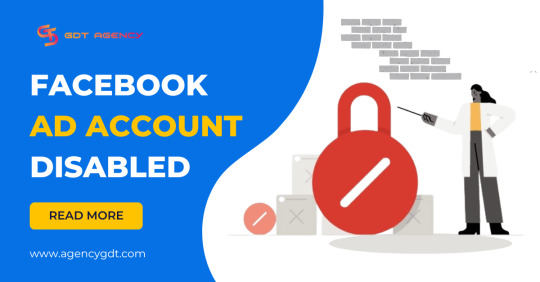
Unraveling the "Facebook Ad Account Disabled" Mystery
Facebook doesn't disable ad accounts without reason. Understanding the underlying cause is the first step towards resolving the issue. Here are the usual suspects:
1. Payment Predicaments: When Money Matters
Facebook, like any business, needs to keep the lights on. If there's a problem with your payment method, your ad account might be temporarily disabled. Common payment-related culprits include:
Insufficient Funds: Always ensure your linked credit card or bank account has the necessary funds to cover your ad spending. Running out of funds is a surefire way to trigger account disablement.
Expired or Incorrect Payment Information: Scrutinize your card number, expiration date, security code, and billing address for any errors. Outdated or incorrect information can disrupt payments and lead to account issues.
Credit Card Limits: If your ad spending exceeds your credit card limit, Facebook might be unable to process the payment, resulting in account disablement.
Solution:
Dive into the "Billing & Payments" section in your Ads Manager to review your current balance and payment activity. Identify any outstanding payments or errors in your payment information.
Pay any outstanding balances immediately. This often resolves the issue quickly and gets your account back in action.
Update your payment method with the correct information or add a backup payment method to ensure uninterrupted service and prevent future payment-related hiccups.
2. Unusual Activity: Raising Red Flags
Facebook employs sophisticated security measures to protect both users and advertisers. If they detect any suspicious activity on your ad account, they might disable it as a precautionary measure. This could involve:
Globetrotting with Your Account: Logging in from Multiple IP Addresses or Unfamiliar Locations: If you're traveling or using a VPN, this could raise red flags and trigger a security alert.
New Device, New Risks: Using a New Device Without Two-Factor Authentication: Enable two-factor authentication for enhanced security. This adds an extra layer of protection against unauthorized access and safeguards your account.
Sudden Spending Sprees: Drastic Increases in Ad Spending: Gradually increase your ad budget over time. Sudden, significant changes can appear suspicious and trigger account reviews.
Name Game: Mismatches Between Your Ad Account and Payment Method: Ensure the name on your ad account perfectly matches the name on your payment method to avoid any discrepancies that could raise suspicion.
Solution:
Verify your identity with Facebook by providing a valid form of identification. This helps confirm that you are the rightful owner of the account and can alleviate security concerns.
Activate two-factor authentication on your account to bolster security and prevent unauthorized access. This adds an extra layer of protection and demonstrates your commitment to account security.
Avoid making abrupt, substantial changes to your ad budget. Gradual increases are less likely to raise red flags and trigger security measures.
3. Policy Violations: Breaking the Rules
Facebook has established comprehensive advertising policies to maintain a positive and safe user experience for everyone. Violating these policies is a common reason for "Facebook ad account disabled" notices. Common violations include:
Prohibited Content: Ads promoting illegal products or services, discriminatory practices, hate speech, misinformation, or other harmful content are strictly prohibited and will likely result in account disablement.
Deceptive or Misleading Practices: Your ads and landing pages must be truthful, accurate, and transparent. Misleading users is a serious offense that can lead to account suspension.
Circumventing Facebook's Systems: Attempting to trick the system or conceal the true content of your ads is a violation that can result in account disablement.
Intellectual Property Infringement: Using copyrighted material or trademarks without permission can lead to account disablement. Facebook takes intellectual property rights very seriously.
Solution:
Thoroughly review and understand Facebook's Advertising Policies. Ensure all your ads and landing pages comply with these guidelines to avoid violations and keep your account in good standing.
If you believe your account was disabled in error, you have the right to appeal the decision. Facebook provides a process for appealing account disablement, and it's essential to utilize this process if you believe a mistake has been made.
Recovering Your Disabled Facebook Ad Account: A Rescue Mission
If your Facebook ad account has been disabled, don't panic. Here's a step-by-step guide to help you recover it:
1. Direct Line to Support: Contact Facebook Support
Reach out to Facebook Support directly through the Business Help Center. Explain the situation calmly and clearly, providing any relevant information they request. This direct communication can sometimes resolve the issue quickly.
2. The Formal Appeal: Submit an Appeal

If contacting support doesn't resolve the issue, submit a formal appeal through Facebook's Business Support Home. To increase your chances of a successful appeal, follow these tips:
Identify the Reason for Disablement: Carefully review the notification from Facebook and pinpoint the specific policy you allegedly violated. Understanding the reason is crucial for addressing the issue effectively.
Rectify Any Violations: If the problem stems from a specific ad or your landing page, correct it immediately. Show Facebook that you are taking action to comply with their policies.
Gather Supporting Evidence: If you believe the disablement was an error, collect screenshots and other relevant documentation to support your claim. Strong evidence can help sway the decision in your favor.
Write a Clear and Concise Appeal: Explain the situation thoroughly, acknowledge any mistakes (if applicable), and express your commitment to adhering to Facebook's advertising policies. A well-written appeal demonstrates your understanding and willingness to comply.
Practice Patience: It may take time for Facebook to review your appeal. Avoid submitting multiple appeals, as this can further delay the process.
Beyond the Basics: Other Ways to Contact Facebook
If you're still facing challenges in reactivating your account, consider these alternative contact methods:
For disabled accounts or login issues: [email protected]
To appeal a decision: [email protected]
For billing and payment problems: [email protected]
To report policy violations: [email protected]
Preventing Future Disablement: A Proactive Shield
Taking proactive steps can significantly reduce the risk of your Facebook ad account being disabled in the future. Here's how:
Stay Informed: Regularly review and familiarize yourself with Facebook's Advertising Policies. These policies are subject to change, so staying current is crucial to avoid unintentional violations.
Gradual Scaling: Avoid sudden, dramatic increases in your ad budget, which can trigger security alerts. Gradually scale your spending over time to avoid raising suspicion.
Accurate Information: Ensure your payment details are accurate and up-to-date. Consider adding a backup payment method to prevent any disruptions in service due to payment issues.
Performance Monitoring: Keep a close eye on your ad performance and engagement metrics. A sudden drop in performance or an increase in negative feedback could signal a problem that needs addressing, potentially preventing future account issues.
Conclusion
A "Facebook ad account disabled" notice can be a disheartening experience, but it's not the end of your advertising journey. By understanding the common causes, taking the necessary steps to recover your account, and implementing preventative measures, you can overcome this obstacle and continue reaching your target audience effectively. With persistence, adherence to Facebook's guidelines, and a proactive approach, you can restore your ad campaigns and achieve your advertising goals.
1 note
·
View note